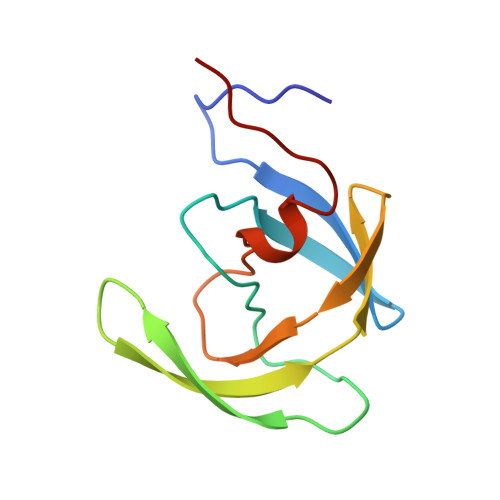Toward a universal inhibitor of retroviral proteases: comparative analysis of the interactions of LP-130 complexed with proteases from HIV-1, FIV, and EIAV.
Kervinen, J., Lubkowski, J., Zdanov, A., Bhatt, D., Dunn, B.M., Hui, K.Y., Powell, D.J., Kay, J., Wlodawer, A., Gustchina, A.(1998) Protein Sci 7: 2314-2323
- PubMed: 9827997
- DOI: https://doi.org/10.1002/pro.5560071108
- Primary Citation of Related Structures:
1ODY, 2FMB, 4FIV - PubMed Abstract:
One of the major problems encountered in antiviral therapy against AIDS is the emergence of viral variants that exhibit drug resistance. The sequences of proteases (PRs) from related retroviruses sometimes include, at structurally equivalent positions, amino acids identical to those found in drug-resistant forms of HIV-1 PR. The statine-based inhibitor LP-130 was found to be a universal, nanomolar-range inhibitor against all tested retroviral PRs. We solved the crystal structures of LP-130 in complex with retroviral PRs from HIV-1, feline immunodeficiency virus, and equine infectious anemia virus and compared the structures to determine the differences in the interactions between the inhibitor and the active-site residues of the enzymes. This comparison shows an extraordinary similarity in the binding modes of the inhibitor molecules. The only exceptions are the different conformations of naphthylalanine side chains at the P3/P3' positions, which might be responsible for the variation in the Ki values. These findings indicate that successful inhibition of different retroviral PRs by LP-130 is achieved because this compound can be accommodated without serious conformational differences, despite the variations in the type of residues forming the active-site region. Although strong, specific interactions between the ligand and the enzyme might improve the potency of the inhibitor, the absence of such interactions seems to favor the universality of the compound. Hence, the ability of potential anti-AIDS drugs to inhibit multiple retroviral PRs might indicate their likelihood of not eliciting drug resistance. These studies may also contribute to the development of a small-animal model for preclinical testing of antiviral compounds.
Organizational Affiliation:
Macromolecular Structure Laboratory, ABL-Basic Research Program, NCI-Frederick Cancer Research and Development Center, Maryland 21702, USA.















